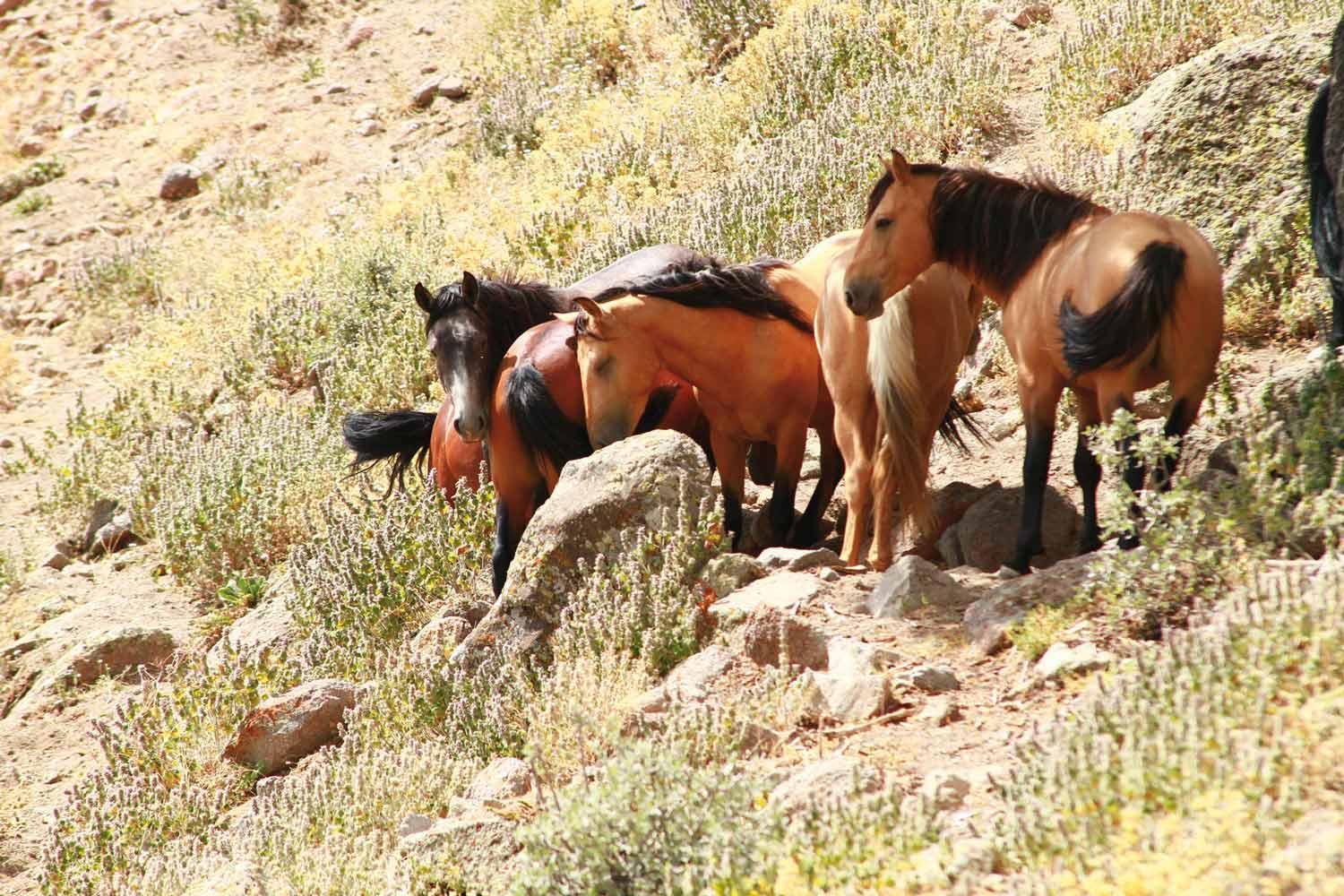
Yılkı horses, the population of which has increased uncontrollably from 80 to 800 on Karadağ Mount in the Central Anatolian province of Karaman, are being prepared to serve tourism after being microchipped.
Nature Conservation and National Parks Director Nurettin Taş said works to catch, mark and adopt the yılkı horses have been continuing.
He said adopted ones will be delivered to their owners with a protocol in order to prevent their release to nature again.
“Legal process will begin against those who violate this protocol. With the project, we aim for the adoption of some 540 yılkı horses. These horses are on demand to be used for tourism, sports, riding, kumis production or pleasure riding,” he added.
Taş said nearly 200 horses that have been caught will be tested for glanders. “The horses will be microchipped and the healthy ones will be adopted. The needs of the horses that we have caught, like water and food, are met.
During the project time, there will be a veterinarian as well as a guard on the field,” he added.
He said the yılkı horses in the region have used a 60-ton-capacity water cistern, built for wild sheep, during the summer months.
“Because the number of horses in the field is very high, they are in competition with the wild sheep for food. Yılkı horses share the food and water sources of the sheep and they give damage to pasture areas with their hooves. They cannot be controlled because of mechanization in agriculture; people do not need them. This is why there is the need to take them out of this area,” Taş said.
‘They need to be controlled’
Murat Tanrıverdi, a 62-year-old local of Madenşehir village, said 40-50 years ago all works had been done with the help of horses in villages.
According to him, horses were used in fields back when people did not have tractors yet.
“We used to plow, harvest and carry loads with these horses. When fall came, we used to send the horses to the mountains. They were living on the mountains alone until the spring and then were caught by their owners. Throughout time, tractors became more common and the need for the horses declined. Villagers did not feel the need to pick up their horses from the mountains and some even sold their horses. The ones on the mountains became wild. The state provides water for the horses in the summer. If heavy snow falls, hay bales are left in some parts of the mountain. In the past, people used to come to Karadağ to see historic ruins, but now they want to see the yılkı horses. Local and foreign tourists and journalists come here. Yılkı horses are the symbols of this region,” he said.
But he noted the increase in the population of the horses was harming the balance of the ecosystem.
“Karadağ has a capacity. It is not only horses that are living in the mountain; there are other animals, too. Horses eat too much; 200-300 horses are no problem but when the number is too many, they come to the lowland and damage crops. This is why yılkı horses should be taken under control,” Taş said.
Water and food resources are, however, falling short in quantity and are not enough to sustain the overpopulation of the yılkı horses, especially after its population skyrocketed by 10 times since 2002.
An endangered species of wild sheep, which are unique to Turkey, were placed in the region in 2004 within the scope of a project. This created a competitive environment for food between the horses and the sheep. Then a project was developed for yılkı horses and work was initiated for the adoption of 540 horses. So far, some 300 horses have been caught.